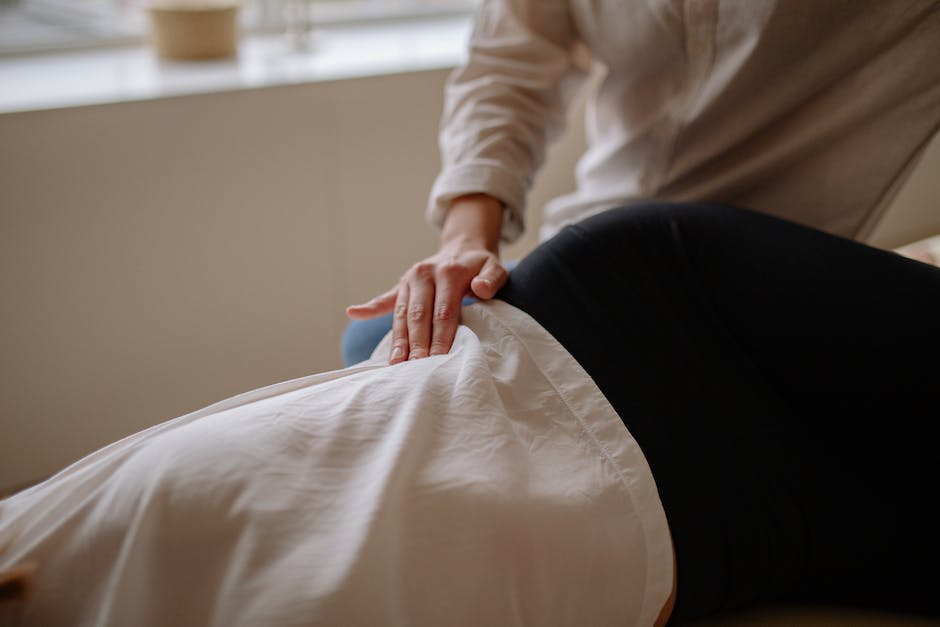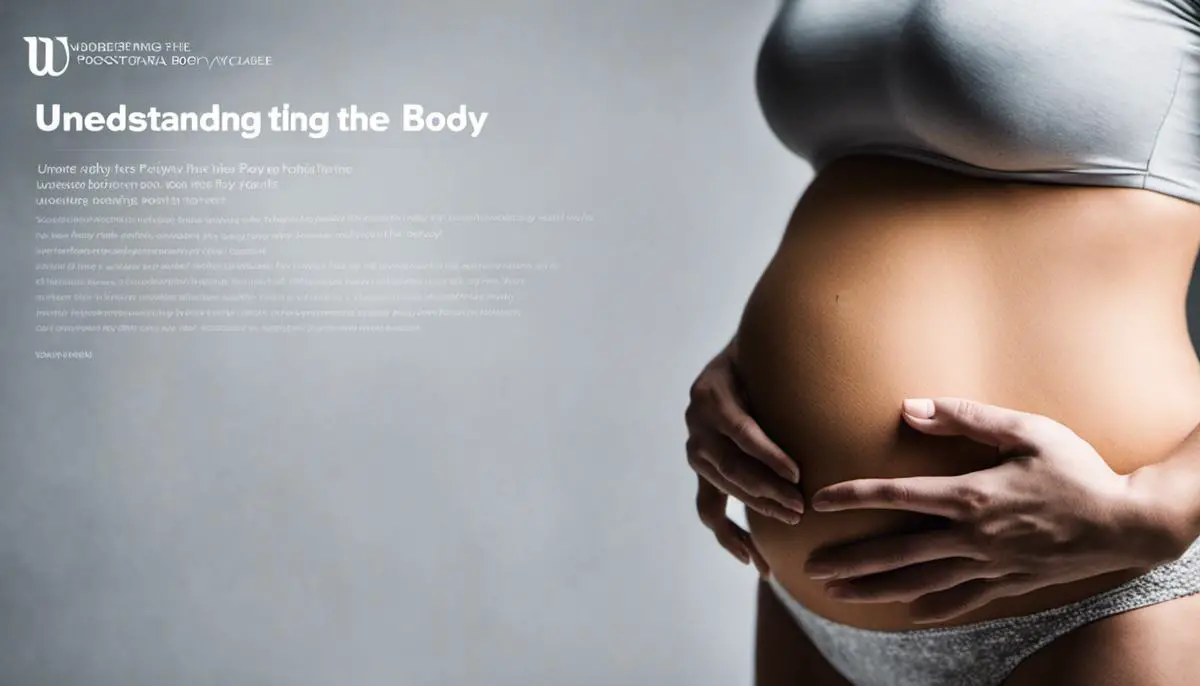Childbirth is a miraculous and strenuous journey that a woman’s body undergoes, creating numerous physical and physiological changes. Among these changes, the abdominal area, which bears the brunt of supporting new life, often needs special attention and care for proper healing and restoration. This is where an effective postnatal belly massage comes into play. Knowledge and skill in applying these massages can significantly enhance the recovery process, helping to alleviate various postnatal discomforts, restore muscle tones, and reinvigorate the mother’s overall wellness. This journey begins with understanding the intricacies of the postnatal body and the therapeutic effects of belly massages, followed by learning the precise massage techniques to ensure a safe and salubrious experience for the new mother.
Understanding the Postnatal Body
Understanding the Postnatal Body: Physical Changes
After childbirth, a woman’s body undergoes many physical transformations as it adjusts from pregnancy. The uterus starts to shrink back to its pre-pregnancy size, a process which often takes six to eight weeks. Fluid retention reduces, causing frequent urination and night sweats. Breasts may engorge in preparation for lactation, which can cause discomfort. Also, hormonal shifts may trigger mood changes, hair loss, and changes in skin pigmentation.
The Role of Belly Massage in Postnatal Recovery
Belly massage plays a central role in postnatal recovery and care. Postnatal massage is a traditional practice in many cultures and is believed to help the body heal and regain its pre-pregnancy shape more quickly. It offers several potential benefits:
- Aides in Uterine contraction: Belly massage can stimulate the uterus to contract, helping to resize it faster.
- Eliminates Excess Fluids: It assists in the elimination of excess body fluids and reduces swelling.
- Bolsters Skin Tone: Massages can improve skin elasticity and muscle tone, thus reducing the saggy skin.
- Reduces Stress: It can reduce cortisol, the stress hormone, while boosting serotonin and dopamine levels, leading to improved mood and relaxation.
- Enhances Abdominal muscle recovery: Belly massage can strengthen abdominal muscles, which often separate during pregnancy.
Precautions in Postnatal Belly Massage
Like any therapeutic intervention, it’s essential to perform postnatal belly massage with care and proper knowledge. Here are few precautions:
- Timing: Wait for at least two weeks after natural delivery and around six weeks after a C section to give your body time to heal. Always seek doctor’s advice before beginning any massage regimen.
- Correct Technique: Make sure the massage is performed by someone who understands the technique. The pressure should be gentle, not causing pain or discomfort.
- Avoid Scar Tissue: If you’ve had a C-section, be careful to avoid the scar area until it is fully healed.
- Listen to your body: Don’t continue the massage if you feel any discomfort or pain. It’s vital to listen to your body and observe any reactions closely.
In conclusion, postnatal belly massage can greatly aid a new mother’s recovery process when done safely and correctly. It encourages physical healing, stress release, and overall relaxation, reinforcing the foundation for the new mother to care for her newborn effectively and efficiently. So, it’s important to take the time to understand these changes, the benefits of postnatal belly massage and the precautions to take in practicing it.

Learning Basic Massage Techniques
Understanding Massage Techniques
Massage is a hands-on body treatment that uses different forms of physical contact to relax, revive, and heal the body and mind. It is one of the most effective ways to speed recovery after childbirth. Understanding how these techniques work and their benefits can be the first step towards improved health and wellness postnatally.
Effleurage Massage Technique
Effleurage is a massage technique that involves long, smoothing strokes using the palms of one’s hand. These slow strokes are delivered in a rhythmic, circular motion, increasing blood circulation and promoting deep relaxation. During postnatal massage, the effleurage technique is used to help ease fluid retention and encourage waste removal from the body, reducing swelling and discomfort.
Kneading Massage Technique
Kneading is another common massage technique. It involves lifting and rolling the skin and muscles between the fingers and thumbs, helping to break up adhesions (knots) in the muscle fibers. This technique can alleviate sore, tight muscles which are common post-pregnancy due to the physical strains of pregnancy and childbirth.
Petrissage Massage Technique
Petrissage is a technique that involves vigorous kneading, rolling, and squeezing of the muscles. This deep massage technique helps to release muscle tension and improve blood circulation. In postnatal massage, petrissage can be beneficial to muscle tone, and can contribute to the restoration of the abdominal muscles’ form and function post-pregnancy.
Deep Tissue Massage Technique
Deep tissue massage involves slow, firm strokes across the muscle grain, targeting the deeper layers of muscle and connective tissues. This technique can relieve chronic tension and reduce adhesions which can limit mobility and cause pain. In a postnatal context, deep tissue massage can help relieve persistent back pain, a common complaint after pregnancy.
Tapotement Massage Technique
Tapotement is a percussion-like massage technique that includes rhythmic tapping, cupping, or chopping. This technique stimulates the nerve endings, improving blood flow and relieving muscle tension. For postnatal recovery, tapotement may help tone lax abdominal muscles and soothe postpartum nerve irritations.
Regardless of the massage techniques used, it’s true that consistent application of these skills would require practice. With sufficient time and dedication, it would gradually lead to proficiency in their application, enabling for effective postnatal massages. As with all health-related treatments, it’s important to consult a healthcare provider before starting any new regimen.

Mastering Postnatal Belly Massage
Understanding The Postnatal Body
The postnatal period, or the period following childbirth, presents unique wellness and recovery challenges. A woman’s body has undergone significant change during pregnancy and childbirth. The abdominal area, in particular, can be weakened and strained. A postnatal belly massage can be beneficial in assisting the body’s recovery process. This type of massage focuses on strengthening and restoring abdominal muscles and encouraging detoxification by stimulating the lymphatic system.
Getting Started with Postnatal Belly Massage
Always wash your hands before starting the massage to ensure cleanliness. Begin the massage from the belly button, using very gentle strokes in a clockwise direction. This mimics the natural path of digestion and can stimulate the intestines to promote healthy digestion and heal post-cesarean birth scars. Use a natural, non-irritating oil such as almond or olive oil to lubricate the area to make the movements smoother and more relaxing.
Massage Techniques: Circles
Start with small circles around the belly button, gradually increasing them in size as you work your way outwards. Be sure to keep the pressure gentle but firm, not causing any discomfort.
Massage Techniques: Zig-Zag
Next, use a ‘zig-zag’ tool, like your hands flat together, to go up and down vertically and then horizontally across the belly. This technique can help stimulate blood circulation and detoxify the body.
Abdominal Scooping Technique
Bonding the fingers of both hands together, set them at the base of the belly, scooping inward and upwards towards the rib cage. Repeat this movement several times while maintaining a rhythm. This technique can support the uterus in returning to its pre-pregnancy size and position.
Maintaining Safety and Comfort
It is crucial to regularly communicate during the massage to monitor comfort levels. The receiver should not feel pain at any point during this massage. If feeling any discomfort, pressure should be reduced or the massage should stop altogether. Many women find it relaxing to have a warm, quiet environment for their massage. You can create this by lighting a candle, playing soft music, or diffusing calming essential oils.
Practice and Adaptation
Like any skill, practice makes perfect. Your body or the receiver’s body would slowly adapt to the massaging routine, and you can accordingly adjust the pressure and techniques used. You may want to start at ten minutes a day, gradually increasing to half an hour, depending on comfort levels.
Remember that each woman’s postnatal recovery is different, so you should always listen to the body and adjust as necessary. Postnatal belly massage can be performed daily for best results, but even sporadic sessions can provide some benefit.

Mastering postnatal belly massage is not just about acquiring massage skills but integrating a deeper understanding of a woman’s postnatal body changes and needs. It encompasses a holistic view, combining anatomical knowledge and practical techniques to create a nurturing experience that can help new mothers regain strength, alleviate discomfort, and heal in the intimate setting of a massage. This proficiency is not gained overnight but is a rewarding journey of continuous learning and practice. With this in place, one can confidently perform a postnatal belly massage, bolstering recovery, and well-being, and perhaps even forging a deeper bond with the recipient in the process.
